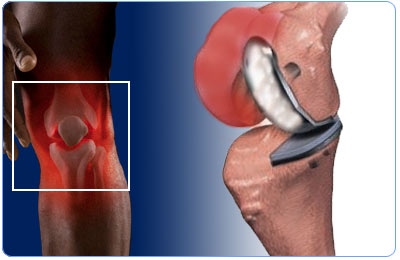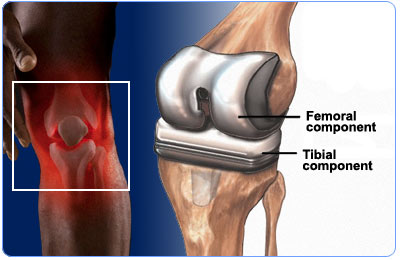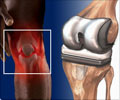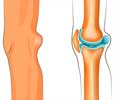Knee Replacement Surgery - Types
Knee replacement may be partial or total.
Knee replacement surgery is of two types, partial or unicompartmental knee replacement and total knee replacement. In partial knee replacement, only one half of the knee, usually the inner half is replaced. In total knee replacement, the entire knee joint is replaced.
Partial knee replacement may be attempted if the knee joint is stable and the outer compartment of the knee is minimally affected. Advantages of this procedure over total knee replacement are:

- Smaller incision is needed resulting in less blood loss
- Patient recovers faster after surgery
- Range of motion after surgery is better
- It can be converted more easily to a total knee replacement
Some types of total knee replacement are:

- Rotating knee replacements: A rotating knee replacement permits forward and backward movements as well as some rotatory movement similar to the normal knee.
- Gender specific implants: Some implants are available specific for males or females.
- Custom knee replacement: The prosthesis in custom knee replacement remains the same as the one used in the standard procedure. However, in this procedure, an MRI of the knee is performed initially with the help of which special cutting guides are designed. These guides ensure that the surgeon removes very minimal normal tissue and assist in reducing the duration of the surgery.










A total knee replacement replaces your diseased knee joint and eliminates the damaged bearing surfaces that are causing you pain. The design of the implant offers you renewed stability and minimizes the wear process. Overall there are three benefits from your knee replacement:
Elimination of pain
Improved motion
Minimum wear and tear
Total knee replacement offers the greatest quality of life improvement of all operations. It has one of the highest success rates and one of the best outcomes.